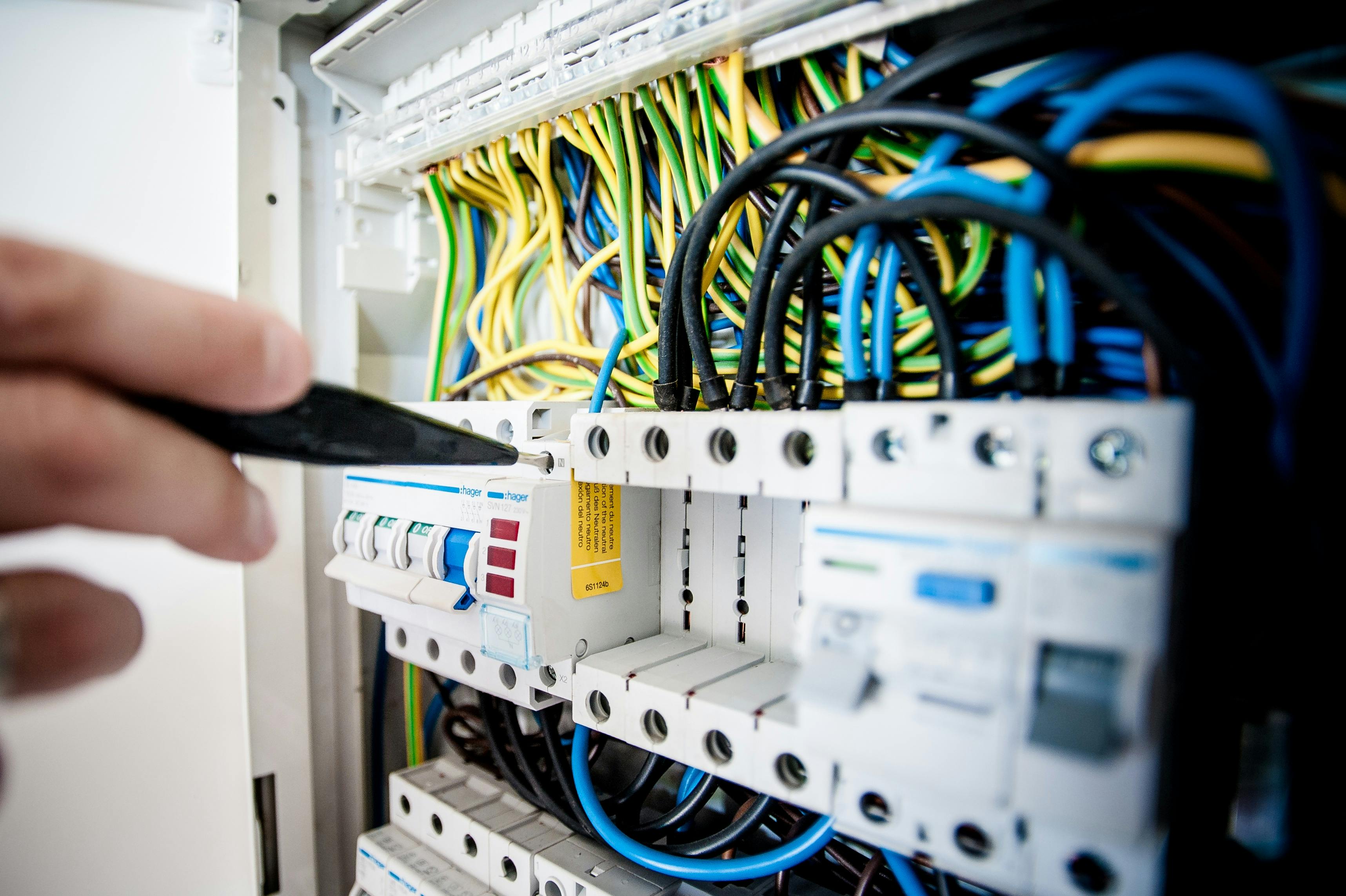
What is Aluminum Premium? Regional Pricing Explained
Understand aluminum regional premiums—the additional cost above LME prices for physical delivery. Learn how US Midwest, European, and Asian premiums reflect local supply-demand dynamics.
When you buy physical aluminum, you don't just pay the London Metal Exchange (LME) price you see quoted in financial markets. You pay the LME price plus an additional charge called the aluminum premium. This premium—which can range from $50 to $800 per metric ton depending on location and market conditions—reflects the real-world costs and regional supply-demand dynamics that the global LME benchmark doesn't capture.
Understanding aluminum premiums is essential for anyone involved in aluminum markets: manufacturers purchasing metal for production, traders arbitraging price differentials, producers pricing sales, and investors analyzing aluminum market dynamics. The premium structure reveals regional supply tightness, logistics costs, trade flows, and market sentiment in ways the LME price alone cannot show.
Aluminum Premium at a Glance
Midwest Premium (US)
$350-600/ton
Historical range 2020-2024
European Premium
$150-350/ton
Typical Rotterdam duty-paid
Premium Components
Transport + Local
Freight, duties, supply-demand
Price Format
LME + Premium
Total delivered cost
Example: LME $2,400/ton + Midwest premium $500/ton = $2,900/ton total cost
What is Aluminum Premium?
The aluminum premium is the additional cost above the LME aluminum price that buyers pay to receive physical aluminum in a specific region or location. It represents the "real-world" costs of getting aluminum from LME warehouses or producers to the end user, plus regional supply-demand dynamics.
The total price paid for aluminum is:
Total Price = LME Price + Regional Premium
For example, if the LME aluminum price is $2,400 per metric ton and the US Midwest premium is $500 per ton, a US manufacturer pays $2,900 per ton for delivered aluminum. The LME price is universal globally, but the premium varies by region, reflecting local conditions.
Why Premiums Exist
The LME price represents the cost of aluminum available for delivery at LME-approved warehouses globally—primarily in Europe, but also locations in Asia and North America. However, most consumers don't want aluminum in a Rotterdam warehouse; they need it delivered to their factory in Detroit, Düsseldorf, or Guangzhou.
The premium covers:
- Transportation costs: Shipping metal from LME warehouses or smelters to the consumer's location
- Import duties and tariffs: Taxes imposed on aluminum entering certain countries
- Handling and logistics: Costs of loading, unloading, storage, and local delivery
- Financing and working capital: Costs of holding inventory through the supply chain
- Regional supply-demand balance: Scarcity or abundance in specific markets
- Quality and form premiums: Specific alloys, shapes, or certifications command additional charges
Major Regional Aluminum Premiums
Different regions have distinct premium structures and market dynamics, reflecting local aluminum supply chains and demand patterns.
US Midwest Premium
The US Midwest premium is the most widely referenced regional premium, representing the cost to deliver aluminum to the central United States—the heart of American manufacturing.
Typical Range: $300-$600 per metric ton, though it has spiked above $800/ton during severe tightness.
Key Drivers:
- Section 232 tariffs: 10% US tariff on aluminum imports (implemented 2018) adds approximately $200-250/ton to import costs
- Domestic production capacity: Limited US smelting capacity means dependence on imports
- Transportation costs: Shipping from Canada, Europe, or Middle East adds freight charges
- Manufacturing demand: Automotive, aerospace, construction, and packaging industries drive consumption
Historical Context:
- Pre-2018: Typically $150-300/ton
- 2018-2020: Jumped to $300-500/ton following tariff implementation
- 2021-2022: Surged to $600-800/ton due to pandemic logistics disruptions
- 2023-2024: Normalized to $350-500/ton range
European Premium (Rotterdam Duty-Paid)
European premiums are typically quoted as "Rotterdam duty-paid," representing aluminum delivered to Rotterdam with all duties paid.
Typical Range: $100-$350 per metric ton
Key Drivers:
- Energy costs: European smelters face high electricity costs, limiting domestic production
- Russian supply: Europe historically imported significant volumes from Russian smelters; sanctions disrupted flows
- Trade relationships: EU trade agreements and import quotas influence supply availability
- Manufacturing activity: European automotive and industrial production drives demand
Japanese Premium (CIF Japan)
The Japanese premium reflects costs for aluminum delivered to Japanese ports (CIF = Cost, Insurance, Freight).
Typical Range: $80-$180 per metric ton
Key Drivers:
- Import dependence: Japan has limited domestic smelting, relying heavily on Australian, Middle Eastern, and Asian supplies
- Long-term contracts: Japanese buyers negotiate quarterly premiums with major suppliers
- Regional supply: Proximity to Australian and Middle Eastern smelters provides relatively stable supply
The Japanese premium is closely watched as a leading indicator for Asian aluminum markets because major Japanese trading houses negotiate quarterly premiums that influence broader regional pricing.
Chinese Premiums (Shanghai vs. LME Arbitrage)
China's aluminum market is unique due to its size (consuming over 60% of global aluminum) and the existence of the Shanghai Futures Exchange (SHFE) as an alternative pricing benchmark.
Rather than a traditional premium, China's aluminum pricing often focuses on the SHFE-LME arbitrage:
- Import arbitrage: When SHFE prices exceed LME prices plus import costs, imports increase
- Export arbitrage: When LME prices exceed SHFE plus export costs, Chinese aluminum flows to global markets
Domestic Premiums: Within China, regional premiums exist between Shanghai, Guangdong, and other provinces, reflecting internal transportation costs and local supply-demand.
What Drives Aluminum Premium Changes?
Premiums fluctuate based on multiple factors that affect the cost and availability of physical aluminum in specific regions.
1. Regional Supply-Demand Balance
The most fundamental driver is whether aluminum supply is adequate to meet demand in a specific region:
- Supply exceeds demand: Premiums compress as suppliers compete for buyers
- Demand exceeds supply: Premiums expand as buyers compete for available metal
Example: When US manufacturing accelerates but domestic smelter capacity is constrained, the Midwest premium rises as buyers bid up imported aluminum.
2. Transportation and Logistics Costs
Shipping costs directly impact premiums:
- Ocean freight rates: Bulk carrier costs fluctuate based on global shipping demand
- Container availability: Shortages drive up costs, as seen during pandemic disruptions
- Fuel costs: Diesel and bunker fuel prices affect trucking and shipping expenses
- Port congestion: Delays increase storage and demurrage charges
Example: During the 2021 global shipping crisis, freight rates from Middle East to US tripled, directly increasing Midwest premiums.
3. Trade Policies and Tariffs
Government policies significantly impact regional premiums:
- Import tariffs: The US Section 232 tariff added ~$200/ton to import costs, permanently elevating Midwest premiums
- Trade agreements: Free trade deals can reduce or eliminate duties, lowering premiums
- Quotas and restrictions: Limits on import volumes constrain supply, raising premiums
- Sanctions: Restrictions on Russian aluminum affected European supply and premiums
4. Domestic Production Capacity
Regional smelter capacity influences import dependence and premiums:
- Smelter closures: When local smelters shut down due to high energy costs or unprofitability, regions become more import-dependent, raising premiums
- New capacity: New smelter startups increase local supply, potentially reducing premiums
- Operating rates: Smelters running at full capacity vs. partial operation affects local availability
Example: European smelter curtailments in 2022 due to soaring electricity prices reduced local supply, expanding European premiums.
5. LME Warehouse Dynamics
The LME warehouse system affects premium levels:
- Queue times: Long withdrawal queues from LME warehouses make physical aluminum less accessible, supporting higher premiums
- Stock levels: Low LME inventories signal tightness, typically correlating with higher regional premiums
- Cancelled warrants: High cancellation rates indicate strong physical demand
6. Currency Exchange Rates
Since LME aluminum is priced in USD, currency movements affect local purchasing power:
- Strong local currency: Makes imports cheaper, potentially reducing premiums
- Weak local currency: Increases import costs, potentially raising premiums
How Aluminum Premiums Are Determined and Negotiated
Unlike the LME price, which is set through open trading on the exchange, regional premiums are negotiated between buyers and sellers or assessed by price reporting agencies.
Bilateral Negotiations
Many premium transactions involve direct negotiation:
- Long-term contracts: Major consumers negotiate quarterly or annual premiums with suppliers
- Spot transactions: Smaller buyers purchase at prevailing market premiums
- Contract structures: Some contracts fix premiums for extended periods; others reset quarterly
Price Reporting Agencies
Independent agencies assess and publish premium benchmarks:
- Platts (S&P Global): Publishes widely referenced premium assessments for major regions
- Fastmarkets (formerly Metal Bulletin): Provides aluminum premium price assessments
- Argus Media: Reports on aluminum premiums and regional dynamics
- CRU Group: Tracks global aluminum premiums and market fundamentals
These agencies conduct surveys of market participants, gathering bid, offer, and transaction data to calculate representative premium levels. Many physical contracts reference these published assessments.
Quarterly Japanese Premium Negotiations
The Japanese premium negotiation process is particularly important as a market indicator:
- Timing: Negotiations occur quarterly between major Japanese buyers (trading houses, manufacturers) and global suppliers
- Benchmark setting: The agreed premium becomes a reference for other Asian transactions
- Market signal: Rising Japanese premiums indicate Asian tightness; falling premiums suggest adequate supply
Results of Japanese premium negotiations are closely watched as a leading indicator for broader aluminum market sentiment.
Why Aluminum Premiums Matter for Different Participants
Understanding and monitoring premiums affects various market participants in distinct ways.
For Aluminum Consumers and Manufacturers
Manufacturers purchasing aluminum must manage both LME price risk and premium risk:
Total Cost Management: The delivered aluminum cost (LME + premium) is what matters for profitability. A stable LME price with rising premiums still increases costs.
Hedging Complexity: Companies can hedge LME price risk through futures, but premium risk is harder to hedge. Some use premium swaps or forward purchase agreements.
Strategic Sourcing: Monitoring regional premiums helps identify cost-effective supply sources. Sometimes importing from a distant location with lower premiums beats local purchase at high premiums.
Inventory Timing: Rising premiums incentivize building inventory; falling premiums favor just-in-time purchasing.
For Aluminum Producers and Traders
Producers and physical traders focus on maximizing premium capture:
Regional Arbitrage: Traders exploit premium differentials by sourcing aluminum from low-premium regions and selling in high-premium markets.
Storage Strategies: When premiums are rising, holding inventory can be profitable; when falling, minimizing stocks makes sense.
Contract Structuring: Producers negotiate favorable premium terms in long-term contracts while maintaining spot market optionality.
For Investors and Analysts
Premium trends provide insights beyond the LME price:
Market Tightness Indicator: Rising premiums signal physical tightness even if LME prices are flat, suggesting potential future LME price strength.
Regional Economic Activity: Premium trends reflect manufacturing demand and economic health in specific regions.
Aluminum Producer Analysis: Companies with favorable geographic positioning relative to high-premium markets enjoy better realizations.
Aluminum Premium vs. LME Price: Different Signals
The LME price and regional premiums can move independently, sometimes sending conflicting signals about market conditions.
Scenario 1: Rising LME Price, Rising Premiums
Signal: Strong demand across both financial and physical markets. This indicates robust aluminum consumption and tight supply.
Example: 2021 post-pandemic recovery saw both LME prices and premiums surge as manufacturing rebounded.
Scenario 2: Rising LME Price, Falling Premiums
Signal: Financial speculation or expectations of future tightness, but current physical market is adequately supplied.
Interpretation: May indicate LME price rally is driven by financial positioning rather than immediate physical demand.
Scenario 3: Falling LME Price, Rising Premiums
Signal: Physical market tightness despite weak financial market sentiment. Regional supply constraints create local scarcity.
Example: Regional supply disruptions (smelter closures, logistics issues) can raise premiums even during LME price weakness.
Scenario 4: Falling LME Price, Falling Premiums
Signal: Weak demand across both financial and physical markets. Indicates economic slowdown or oversupply.
Example: 2008 financial crisis saw both LME prices and premiums collapse as manufacturing contracted.
Related Topics on SpotMarketCap
Conclusion
Aluminum premiums represent the critical link between the abstract financial market (LME price) and the physical reality of delivered metal costs. While the LME price captures global supply-demand fundamentals and financial flows, regional premiums reveal the local logistics, trade policies, and supply-demand dynamics that actually determine what manufacturers pay for aluminum.
Understanding premiums is essential because they can represent 10-30% of total aluminum costs during normal times and even more during periods of extreme tightness. A manufacturer focused solely on hedging LME price risk while ignoring premium risk may find that rising premiums erode profitability despite successful LME hedging.
For traders and investors, premium trends provide early signals about physical market conditions that may not yet be reflected in LME prices. Rising premiums often precede LME price strength, while falling premiums can signal weakness before it appears in exchange prices.
The structure and evolution of aluminum premiums also reflect broader economic trends: trade policy shifts, manufacturing relocations, infrastructure development, and supply chain transformations. The rise of US Midwest premiums following Section 232 tariffs, the impact of European energy costs on premiums, and the influence of Chinese demand on Asian premiums all tell stories about the changing geography of aluminum production and consumption.
Remember: In aluminum markets, the LME price is just the beginning of the story. Regional premiums complete the picture, revealing the true cost of physical metal and providing insights into supply-demand dynamics that global benchmarks alone cannot show. Master both components, and you'll understand aluminum markets far better than those who focus on LME prices alone.
Track Real-Time Asset Prices
Get instant access to live cryptocurrency, stock, ETF, and commodity prices. All assets in one powerful dashboard.
Related Articles

What is the LME? London Metal Exchange Guide
Comprehensive guide to the London Metal Exchange (LME)—the world's premier marketplace for industrial metals. Learn how LME trading works, warehouse systems, and global price discovery.

What is Copper Backwardation? Supply Tightness Signal
Learn copper backwardation—the powerful supply tightness indicator in metals markets. Discover what drives backwardation, how to identify it, and trading strategies to profit from this condition.

What are Copper Warehouse Stocks? Inventory Tracking
Master copper warehouse stocks—the key indicator of physical copper availability. Learn how LME inventories signal market tightness and influence copper prices globally.